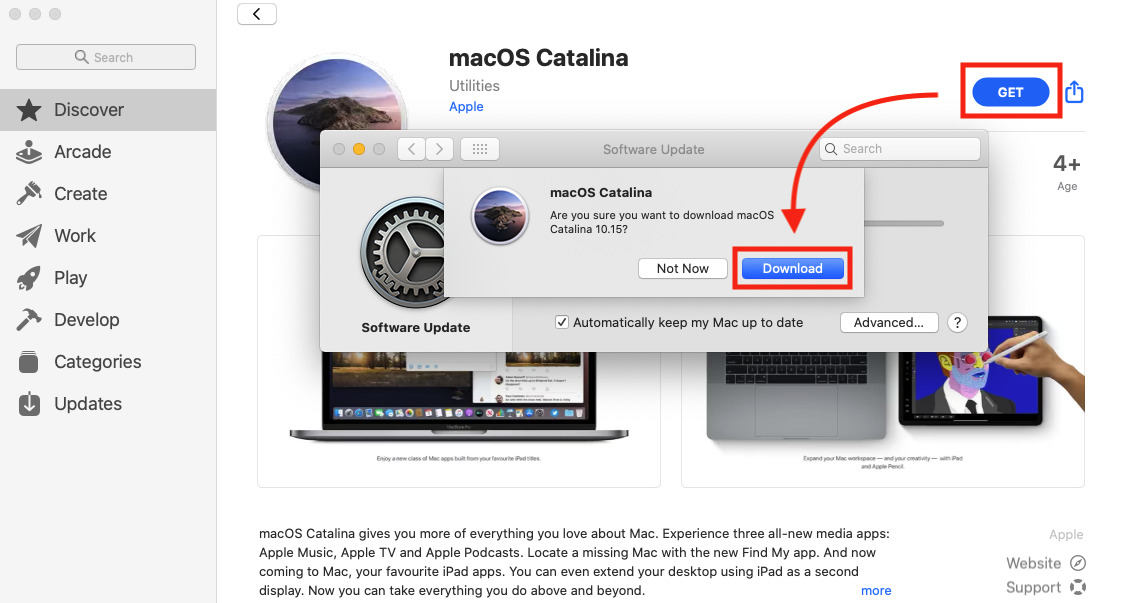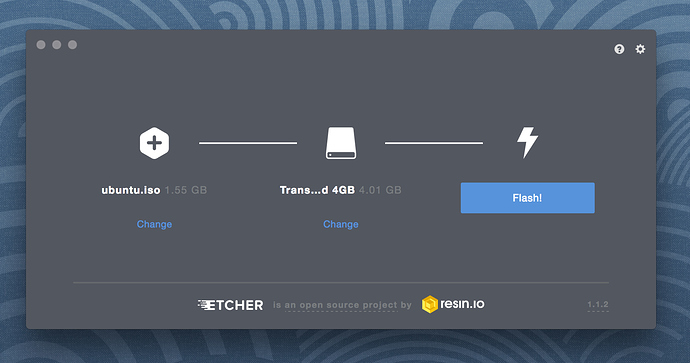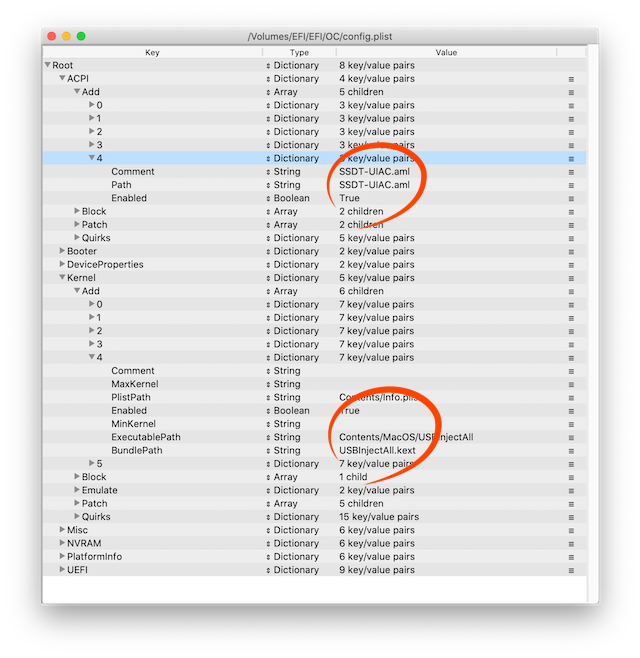Boot Macos Usb
In this Post, we will cover How to Dual boot macOS Mojave and Windows 10 on PC on Single Drive. If you think it that really possible because Windows 10 and macOS Mojave partition types are totally different, it’s like east and west. MacOS Mojave runs on Mac Extended Journaled with other partition type and windows runs on MS-DOS or another type of partitions. That’s the reason why I’m asking this question.
- For macOS, USB boot VirtualBox Virtual Machine. Note: VirtualBox should be installed already on the system. Step 1: Open a Terminal. In the Terminal of MacOS type a command: diskutil list to see all attached disk and USB drives. When the list appears, jot down the bootable USB drive letter (example /dev/disk2) as we have done for Windows above.
- In macOS, the Boot Camp Assistant app will help you partition your Mac hard drive to accommodate both operating systems, so you can install Windows from an installation disk or an ISO image stored on a USB flash drive.
Related:
Bootable USB installers offer an easy way to upgrade multiple Macs to macOS Catalina, to perform clean installs of MacOS Catalina, to perform maintenance from a boot disk like formatting disks, modifying disk partitions, and performing restorations, and much more. We’ll walk through how to create a boot USB install drive for MacOS Catalina 10.15. Depending on which version of MacOS you’re creating a USB stick for, the path varies. In this example, we’re using the path to make a bootable USB image of El Capitan, just in case things go awry with the current installation of Sierra. It’s going to take a while to copy the MacOS to your USB stick, so patience is a virtue during this step. 15 Best Bootable USB Tools For Windows, Linux and MAC OS. Here is a list of the best programs with which we can create bootable USB drives from different operating systems, either in Windows 10 or GNU/Linux or macOS. Here they are mentioned below.
So anyway still it is possible to Dual boot macOS Mojave and Windows on PC on Single Hard Drive. So, let’s get started.
Required Files:
- Download TransMac
- Download macOS 10.14 Mojave Dmg file
- Download Clover Configurator
- Download Rufus
- Download Windows 10
- Download macOS 10.14 Mojave Kexts
How to Install macOS 10.14 Mojave on PC?
Step 1. Prerequisites of macOS Mojave to Dual Boot
The very first thing you have to prepare the required files in order to dual boot macOS 10.14 and Windows 10. Since We are about to Install macOS 10.14 Mojave on PC first, you need to Prepare A bootable USB of macOS Mojave.
Creating a Bootable USB of macOS Mojave takes time, and most importantly you have to prepare a 16 GB USB Flash Drive and macOS 10.14 Mojave dmg file.
Once the required files are ready it is time to deploy creating bootable USB for macOS Mojave.
If you are a Mac User and want to create a bootable USB for macOS 10.14 Mojave on mac, then click on the below link and follow the instructions on How to Create a Bootable USB for macOS 10.14.
Well, if you are a windows user you can also create a Bootable USB for macOS Mojave on Windows too. Actually, there are two ways, such as the Transmac and VMware Workstation Pro. So, it is your decision which one you are interested to use.
Step 2. Install macOS Mojave on PC
Once you are ready to Attach the USB Flash Drive to your Computer and Hit the Boot key of your Computer.
After that wait until you reach the Clover Boot Manager and from their select the USB Flash Drive and move to the next step.
Well if you are using a Nvidia Graphic on your PC then certainly you have to check the Nvidia, if not leave it as it is.
Boot Usb Macos High Sierra
Use Nvidia Web Driver
Once you check the Nvidia Web Driver, select boot macOS with selected options and hit enter on the keyboard.
Once you reached the Disk Utility window you have to select Disk Utility to partition that for macOS 10.14 Mojave.
Disk Utility
When all the drives are listed you have to select the drive where you want to install macOS 10.14 Mojave and Erase that with any name which you wish but with partition type of Mac OS X Extended (Journaled).
Once the drive is partitioned close the disk utility and you will be back to the main window. From their select Install macOS.
Install macOS Mojave
After this step the Installation process is so simple, that’s why I have not provided any screenshot.
- To setup macOS Mojave Click Continue.
- Agree to the terms and conditions and click continue.
- Select the Drive which you just partitioned and click continue.
- After that, you have to Wait until the installation is complete, once it is done it will restart.
Once the System restarts, again hit the boot key of your computer and select the USB Flash Drive. After that again select Nvidia Web Driver and select boot macOS with selected options and hit enter on the keyboard just like before.
After that it will be on apple logo completing the Installation process, just don’t do anything and wait until it restarts the system once again.

After restart again enter the boot key and this time select the UEFI OS and hit enter. It means that macOS 10.14 Mojave is installed on your system but some configuration is still remaining.
You can also select the UEFI Option too but further you will also select this option called boot from HDD.
Boot from Hard Disk
Once you select the UEFI OS, then you will be headed to the Clover Boot Manager, there you have to select the Boot From HDD. Basically, HDD is the Name which was given while partitioning the Drive.
After that once again select the Nvidia Web Drivers with selected boot options to move to the next step.
Options for Boot From HDD
After that, the system will restart once again and you will be on the actual installation of macOS 10.14 Mojave.
- Select Your Country and click continue.
- Select your keyboard and click continue.
- Agree to Data & Privacy and click continue.
- Select Don’t Transfer any information to this mac and click continue
- Decide to add an Apple ID or no, and select continue.
- Once again agree to the terms and conditions and click continue.
- Enter your name and password and click continue.
- Click agree to express and setup and click continue.
- Choose your look dark or light and click continue.
- Wait until the desktop should be ready for first use.
Step 3. Post Installation
Post Installation is really important, if it is installed and fixed then you will certainly hate the macOS. So Click on the below link and download the Clover Configurator.
- Download Clover Configurator
After downloading the Clover Configurator open it and move to the mount UFEI Section and mount the UEFI by entering your password.
Also, Please mount the UEFI the other drive too which is from mac os.
Before getting to any confusion, I will call the white EFI Drive EFI 1 and another one EFI 2.
Ok Now open the EFI Drive and copy all the three items and move to the EFI 2 and delete that, instead of them paste these ones which you copied from EFI 1.
Paste 3 items
Once you have configured the bootloader, it is time to restart your system.
Well, sometimes it may happen that it may not work for configuring the bootloader then that I recommend you to Install the Multibeast and configure all the Kext. Without the Multibeast you can also try the Clover bootloader too.
For Sound Problem you have to install the Voodoohda.
Here is the other Kexts where you need to Install them in case the clover configurator doesn’t work.
- AppleIntelE1000e.kext
- AtherosE2200Ethernet.kext
- FakeSMC.kext
- IntelGraphicsFixup.kext
- IntelMausiEthernet.kext
- Lilu.kext
- NullCPUPowerManagement.kext
- NvidiaGraphicsFixup.kext
- RealtekRTL8111.kext
- Shiki.kext
- USBInjectAll.kext
- VoodooPS2Controller.kext
Download macOS 10.14 Mojave Kexts.
Create Empty Storage for Windows 10
Now that you have installed and configured the MacOS Mojave is time for you to install windows 10. But Before Installing Windows 10 you have to make at least 12 GB Free storage for windows in order to Install their the windows 10.
I know Windows 10 only requires 12 GB Storage, but depending on your work you have to decide How much amount of storage you are going to add.

To create an empty amount of storage for Windows 10, first, open Disk Utility by searching in the spotlight. Spotlight Can be accessed by holding the Windwos+Space button or simply click on the search logo at the right side of the menu.
Once you have Opened the Disk utility Select the Drive from the left pane then select Partition.
After that click on the Plus icon, then on the right side specify the amount of storage, Partition type and Name of the Volume.
Create a New Volume
Once you are done with the settings, simply select Apply> Partition> Continue> Done.
After that, you have to need to format the partition type to MSDOS, to do that, select the Windows 10 Volume and erase that. While erasing you have to change the partition type from Mac OS Extended (Journaled) to MS-DOS.

In order to install windows 10 on over the macOS 10.14 Mojave, first, you have to prepare a bootable USB of Windows 10. Creating a bootable USB of Windows 10 really Simple, all you need is an 8GB USB Flash Drive, Windows 10 iSO and Rufus.
However, you can also create a bootable USB of Windows 10 with CMD too but I suppose it is hard for you. that’s why I recommended you to use the Rufus.
OKAY! let’s dig into the Installation of Windows 10.
- Step 1. Insert the USB Flash Drive.
- Step 2. Press the boot key of your computer.
- Step 3. Select the USB after pressing the boot key.
- When you reached the windows setup page simply click next. Because there they will ask you to select your language, country keyboard language.
- Then select Install.
- Select a Windows 10 version and click next.
- Agree to the license and agreement by checking the box.
- Then select Custom: Install Windows only.
- Once you reached the partition section, select the windows 10 drive and delete it.
Delete the Windows 10 Volume
Macos Boot Usb Creator
Once the drive is deleted, scroll down and select empty space and simply select next. The empty space will create a new drive of Windows 10.
Now, wait until the installation process is complete.
Once the windows 10 restarts, press boot key of your computer and select the Windows Boot manager. After that, you have to set up the basic stuff, like username, password and more.
That’s all with How to Dual Boot macOS Mojave and Windows 10 on PC. I hope it was helpful and understandable. if you have any question don’t hesitate from asking them.
Watch the Video
Apple has just released the final version of macOS Big Sur to the public. You can start upgrading your compatible Mac devices by downloading Big Sur from the App Store or Settings > Software Updates. But if you prefer to completely wipe out your Mac and do a fresh install of macOS Big Sur, you will need a bootable media.
I perform a fresh install every time Apple releases a major macOS version – which usually happens once a year. This time too, I will update my Macbook Air by performing a fresh install. And to do that, I will make a bootable SD card. You can also use a USB stick aka pen drive aka flash drive and perform a fresh install.
In this quick tutorial, I will share how I make a bootable macOS memory card or USB stick, wipe my Mac, and perform a fresh install. You will need a stable internet connection and a storage media with minimum 16GB space. Before you begin, make sure you have taken backup of your Mac.

Step 1: Download macOS Big Sur
Open App Store and search for macOS Big Sur. Click Get and the Software Update window will open. Click upgrade now and it will start downloading the macOS update. If you don’t see macOS Big Sur in App Store, follow this link and choose open link in App Store.
The installer is 12GB so be patience.
Once it finished downloading, the macOS installer is placed under Applications and will run automatically. Close the setup window.
Step 2: Preparing the Storage Media
Insert the storage media you would like to use. I use a 64GB micro SD card with my MacBook Air. You can use a USB-C to USB adapter for Mac models without USB A ports and memory card slot.
Open Disk Utility.
Select the storage medium you just connected from the list on left and click Erase. Select Mac OS Extended (Journaled) from Format dropdown. Type BigSur or any other name you like. Make it simple because you will use this name in the next step.
Click Erase and wait until the media is erased.
Step 3: Making the Bootable Media
Now open Terminal and type the following command. Make sure you don’t leave any spaces. Replace BigSur with whatever name you chose in Step 2.

Boot Usb Macos Catalina
Press enter.
Enter your password, type Y and press enter again. The process takes roughly 20 minutes. After it’s finished, you will notice that the name of your USB stick/SD card has been changed to Install macOS Big Sur.
Step 4: Installing macOS Big Sur from Bootable Media
Right. Now you have a Big Sur bootable media. It’s time to start the installation process.
Restart your Mac. When it’s booting up (right after the chime sound), press and hold Option key until you see a screen with an option to select the startup disk.
Select Install macOS Big Sur and click continue. Let the installer load.
Now you will see the macOS Recovery screen which will ask you to select a user account which you know the password of. Choose your administrator account and enter password. Note that this is the user on your current macOS setup.
Click Disk Utility and continue. Select the volume where macOS is currently installed on your Mac. Click Erase. Leave all options as default. Click Erase again.
After the process finishes, close Disk Utility and you will return to the recovery screen. Choose ‘Install macOS’ this time and click continue.
The macOS installation process will start and your Mac will reboot a few times.
Once finished, you should see the macOS setup screen. After you are done with onboarding, you will see the desktop and are all set to start using macOS Big Sur.
The same bootable media you just made can be used to install macOS Big Sur on all your (compatible) Macs. This approach helps save bandwidth if you have more than one devices while also letting you erase all data and perform a clean install. It will also come in handy as a recovery media if your Mac software misbehaves in future.
That’s all, folks. This was a tutorial on making a bootable macOS Big Sur installation media. I hope you found it useful and I’d like to thank you for reading.
Support Me: If this article/tutorial helped you today, please consider supporting me and help me run techstuffer.com.
